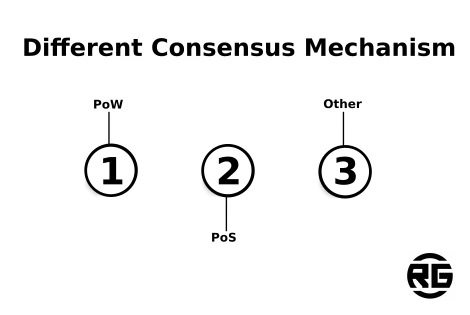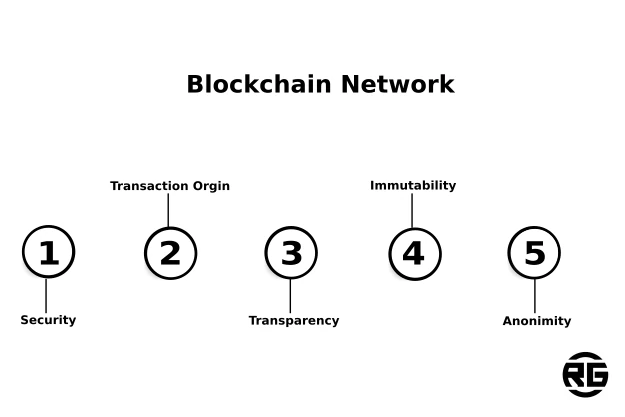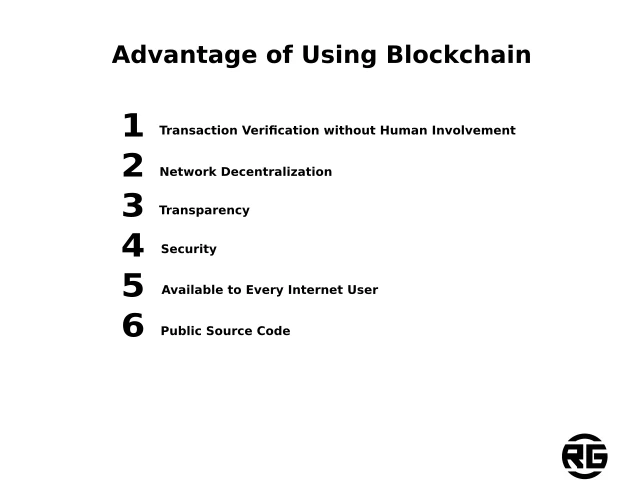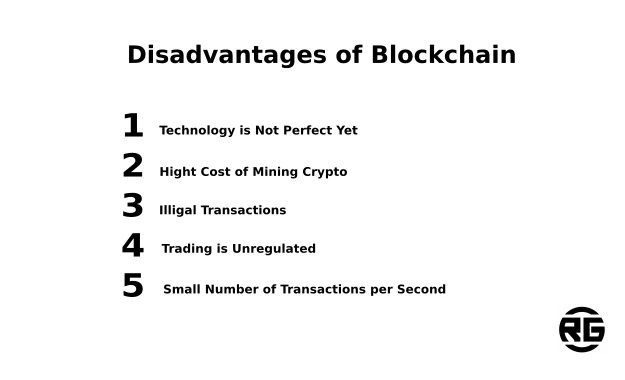What is Blockchain ?
What is blockchain, because today about one of the most in-demand technologies, indeed. Moreover, there are a few questions to ask: What is it really about? Then, why is blockchain such an innovative technology? How will the future change thanks to it?
From the beginning, however … Blockchain is a decentralized database in many places. Obviously, the more points of dispersion in the network that makes up the blockchain. The better for security and network reliability reasons.
Without a doubt, all users in the cryptocurrency network receive information in the same time. All transactions on the network are recorded and unalterable. There is no need to use institutions such as a bank!
A blockchain is a form of democratic governance of the network by its users…
Everyone has the same access to information. Thus access to knowledge and the ability to make better decisions.
The whole concept of digital ledger seems not to be that innovative, but … cryptographic ledger is a technology that will change many aspects of how our society works. About where chain networks is using in a moment, but first I will return to the beginnings, i.e. I will discuss the history of blockchain formation.
Blockchain History

Indeed, we could see more intrest of blockchain search during peak of hossa. So, it’s related with psychology of market.
Blockchain was mentioned for the first time in the 90s of the last century. Then, it was time that the blockchain concepts were born and in 1992 a Merkle tree was added to the project. Surely, this change allowed for improved performance and the ability to collect several document credentials into one block.
We had to wait until 2008 for a breakthrough. Obviously, it was a person or group of people, Satoshi Nakamoto, created the first decentralized distributed ledger.
Undoubtedly, the design itself was improved and a method of marking time blocks similar to Hashcash began to be used. Also, these tags did not need to be signed by a trusted third party. In addition, a difficulty parameter has been introduced to stabilize the speed of adding blocks to the chain.
These were the foundations of the bitcoin network, and “cryptocurrency gold” is growing stronger and stronger.
Today, bitcoin has a lot of followers all over the world.
More about bitcoin
Surely, the term blockchain itself is coining in 2016 from the combination of the words block and chain used separately in Satoshi Nakamoto’s whitepaper.
How Does Digital Ledger Work?
In the blockchain, transactions are stored in blocks, so with each newly generated block referring to the previous block with a unique identification number called a “hash” (mentioned in the previous paragraph). These blocks form a chain, hence the name “blockchain”. (block + chain). This following chain goes on forever.
Particularly, in the case of blockchains like Bitcoin, trust is based on technological characteristics. Such as the fact that all blocks can be viewed publicly.
Without a doubt, no transaction will be added to a block without first being verified by a miner. Because miner is a special type of computer on the network responsible for creating new blocks on the network. In this case, the community ensures that no untrusted transaction is recorded on the public transaction ledger.
As such, blockchain can be used even by parties who do not necessarily trust each other to conduct business because they know that their transactions are tamper-proof.
Public transaction ledger is transparent, so the transactions that took place in it are available to anyone at any time. All this is not subject to any modification, because the blockchain cannot be modified.
Different Consensus Mechanisms
This is a mechanism that is responsible for the security of the cryptocurrency network. Thanks to it, the authenticity of the transaction takes place, because it’s crucial in maintaining this security.
We have some of the most popular consensus mechanisms. Among them are following types:
PoW (Proof-of-Work)
Proof-of-work (PoW) is a system that uses hard-to-calculate but easy-to-verify features to limit the benefits of cryptocurrency mining.
The Proof-of-Work concept prevent cyberattacks such as DDoS (Distributed Denial of Service). A DDoS attack occurs when a device, such as a computer, is compromising and fills up with traffic. That causing it to overload and thus drain and shut down the system.
PoS (Proof-of-Stake)
Indeed, Proof-of-Stake (PoS) is a type of consensus mechanism where users of a blockchain-based network must wager a certain proportion of their coins or tokens for a chance to verify a transaction on a block.
When a user is selected to approve a block and can verify all transactions in that block, they are rewarded with a certain amount of cryptocurrency for their work.
As well as that, PoS is comparable to the Proof-of-Work (PoW) algorithm as they both need their network participants (or verification nodes) to achieve distributed consensus.
Many crypto coins want to switch to the Proof-of-Stake system, too. It is much more centralized and energy efficient in the long run.
The very idea of centralizing cryptocurrencies departs from its basics, i.e. decentralization ensuring the lack of authoritarian project management.

Two the most important consensus mechanism are PoW and PoS, because of Bitcoin and Ethereum.
Properties of the Blockchain Network
A blockchain network is a computer network designed for maximum reliability. Every digital ledger network should be based on it.
Security
Firstly, cryptographic algorithms are used to verify online transactions.
Immutability
Secondly, blocks in the network should not be changed or removed. Then, moving away from this concept is incompatible with the philosophy of blockchain networks and cryptocurrencies in their essence.
Transaction Origin
Thirdly, all transactions can be seen on the blockchain network.
Transparency
Fourthly, operation according to strictly defined rules and reliability thanks to the use of cryptography,
Anonymity
Users in the network have their addresses, but not identifiers.
Without a doubt, online anonymity is an important aspect of functioning in decentralized public networks. Users on the network have unique addresses, but their identities are unfamiliar.
In the era of advancing cryptocurrency adoption, this concept is increasingly difficult to achieve.
As far as the network users themselves can remain anonymous, as long as it is almost impossible to trade cryptocurrencies while being an anonymous user
More and more cryptocurrency exchanges authorize their users as a standard, and thus their identity does not remain anonymous.
Decentralization
Finally, no main authority managing the network. Surely, access to information for network users is equal and is not subject to central management.
The right to decide on the development of a given cryptocurrency belongs to network users, indeed. They create the network, determine its development, and thus its success.
Decentralization is a form of democratic creation of the best future thanks to the votes of its users. Anyone can become a network user if he invests or will be involved in creating a network society.

Blockchain network can be characterized by a few features like security, transparency, immutability and so on.
What is the Structure of the Distributed Ledger?
Blockchain is a linear structure of blocks forming an infinite chain, hence the name.
Each block contains a set of transactions and other relevant details. The blocks are linearly connected and cryptographically secured.

Each block header contains the hash of the previous block, the hash of the current block, the nonce, the Merkle root, and other details.

All blocks are carrying the previous block’s hash.
The hash of the previous block is used to calculate the hash of the current block. The first block without the hash of the previous block is the “Genesis” block. To add a new block to the network, the blockchain uses consensus mechanisms.
Advantages of Using a Blockchain
Blockchain technology has many advantages:
1) transaction verification without human involvement,
2) network decentralization,
3) transparency and transparency of transactions,
4) security through cryptography,
5) available to every Internet user,
6) projects have publicly available source code.
As you can see, public transaction ledger has many advantages, and certainly, more and more entrepreneurs, institutions, and individuals will join the circle of blockchain users.
What seems unlikely today will become commonplace in a few years, blockchain will be almost everywhere.

Obviously, blockchain brings to table a lot of advantages. Of course, if your will use them right way.
Disadvantages of Using a Blockchain
Digital ledger is not without its flaws:
1) the technology is not perfect yet,
2) high costs of mining cryptocurrencies,
3) anonymity affects illegal activities (a small part of all transactions),
4) the trading market is unregulated (this is also an advantage),
5) small number of possible transactions per second,
Blockchain is a technology that is young and requires many improvements.
An unregulated trading market influences a large number of scams.
Mining costs are constantly falling, but they are still high. The market itself favors illegal transactions. It should be added that illegal transactions are a small part of all others.

Never forget, that even the greatest technology has weaker points. In case of blockchain it would be early stage.
Where We Use Blockchain ?
Public transaction ledger has found its application in many economic sectors – such as entertainment, commerce, finance and payment, management, and the Internet of Things.
“Technology of the future” is more and more present around us.
In more detail about practical examples of the use of digital ledger another time.
About Blockchain Security
In general, blockchain security is a comprehensive assessment procedure. All procedure is performming for a digital ledger solution or network to ensure their safety. Blockchain security is achieving through the implementation of a cybersecurity framework, security testing methodology, and secure practices coding. All of that to protect the blockchain solution from online fraud, breaches and other cyberattacks, indeed.
The distributed ledger infrastructure is a decentralized and wide-area computer network. Ensuring the safety of its users is demanding and requires a comprehensive risk assessment procedure.
In order to increase the security of the “cryptographic ledger” network, penetration attacks can be carried out, which allows you to find weaknesses in the security of the network earlier.
What is the Future of Distributed Ledger?
Based on data from previously innovated technologies, any new technology needs to reach critical mass.
For some time, distributed ledger will be in the foreground. Market have demand for developers who can create digital ledger applications. We are looking for services that can integrate blockchain applications with non-blockchain data or services running on incompatible blockchains. We focus on scalability and security.
Around the blockchain, new technological solutions is creating for another innovation.
More intense searches occur whenever there is a greater interest in the blockchain on the exchange.
When the revolution comes – this technology will be a mature, stable basis for the applications and services we desire. We will focus on them and stop talking so much about blockchain.
We will know that blockchain technology has achieved its success when we stop talking about it. Blockchain will become something without which we cannot imagine our future.
It was similar to the Internet, smartphones, and social media.
Summary
Surely, it was possible to find out a little about what blockchain is and what its future is. So, it is worth remembering that cryptographic ledger is an innovative technology available to everyone.
Cryptocurrency adoption is steadily progressing. Next, Bitcoin is the first cryptocurrency in blockchain technology. Besides, this is one of the reasons why bitcoin is such an important asset in the cryptocurrency market. Cryptocurrencies are digital money that is based on blockchain technology.
Blockchain technology is revolutionary in many ways but is only 15 years old. Moreover, in the next 15-20 years, there may be full adoption of cryptocurrencies and blockchain technology.

Leave a Reply
You must be logged in to post a comment.